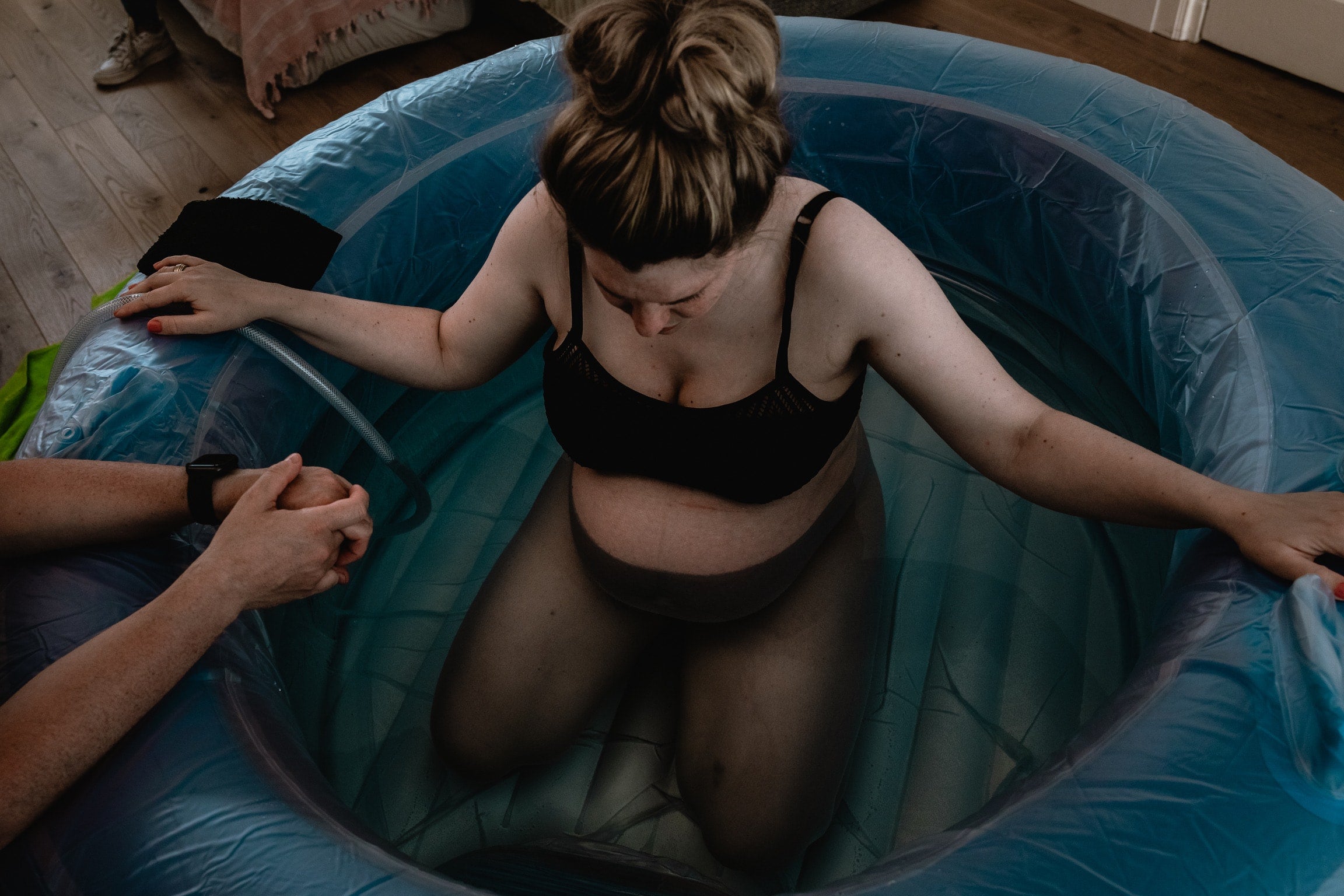Water birth process
Preparing for your water birth during pregnancy
A good preparation makes your water childbirth smoother and more comfortable. Here’s what you should arrange during your pregnancy:
Arrange your birth pool: Decide if you want to buy or rent your birthing pool. Check with your midwife if your hospital or birth centre provides a birth pool.
Check your kit: If you've rented or bought a pool, make sure you have all the parts you need right away.
Manuals and videos: Go through the instructions and videos beforehand, so there’s no stress when your water birth labor starts.
When labour begins
As soon as labour starts, your partner or someone else with you can begin preparing the birth pool. This involves inflating your pool, arranging accessories, and filling it with warm water (around 37°C). Check your instructions carefully before your due date so you're familiar with the setup.
First stage of labour: dilation
You can get into your birthing pool whenever contractions become strong, and you feel the warm water will offer relief. There's no fixed dilation required, you decide when it feels good. The warm water relaxes your muscles, making it easier to change positions. This often positively influences the length and ease of your dilation phase.
After about 90 minutes, the warm water’s soothing effect may fade slightly. It can help to step out briefly for a bathroom break or a check-up by your midwife. Once you return to the warm water, you'll usually feel the relaxing effect strongly again.
Midwife checks during water birth
Almost all checks by your midwife can take place comfortably in the birth pool. Your midwife can monitor your baby's heartbeat using a waterproof Doppler. Internal checks can also often be done without leaving the water.
More and more hospitals now offer wireless CTG monitors. This means you can stay comfortably in your birth pool during a hospital birth while your baby’s heartbeat is continuously checked. This allows you to fully relax and enjoy your water birth.
Pushing and delivery
Often, you can remain in the birthing pool for the birth itself. Warm water helps you move into comfortable positions for pushing, like squatting, sitting, or kneeling. Your baby's heartbeat is regularly checked during this stage.
If you're delivering in a hospital due to a medical indication, your doctor or midwife might recommend giving birth outside the pool. Discuss this clearly beforehand to know if a birth in water suits your situation.
How long can a baby stay underwater?
After birth, your baby can safely stay underwater for a short moment (up to one minute if the baby is healthy), as they’re still receiving oxygen through the umbilical cord. Your midwife, partner, or you will gently bring the baby above water afterward.
Delivering the placenta
After your baby is born, your midwife closely monitors you both. She’ll regularly check your uterus, blood loss, and overall wellbeing. Your baby might get a little hat and warm towels to keep them cozy.
You and your midwife will decide together on the best moment to cut the umbilical cord. Sometimes the placenta can also be delivered in the birth pool, this depends entirely on your personal situation and preference.
When should you leave the birth pool?
Your midwife keeps a close eye during and after delivery to determine the best moment to leave the water. Thanks to the white floor of your birthing pool, she can easily monitor blood loss and judge if it's safe to stay in or better to step out.
Make sure your partner or midwife helps you leave the pool safely. Your birth pool has wide, sturdy edges where you can comfortably sit and get out slowly. Afterwards, you'll be dried off and can cuddle up with your baby comfortably in bed.
Want to learn more?
Now you have a clear overview of how a water birth typically unfolds. Curious about why a specialized birthing pool is needed or the practical side of using your birth pool?
